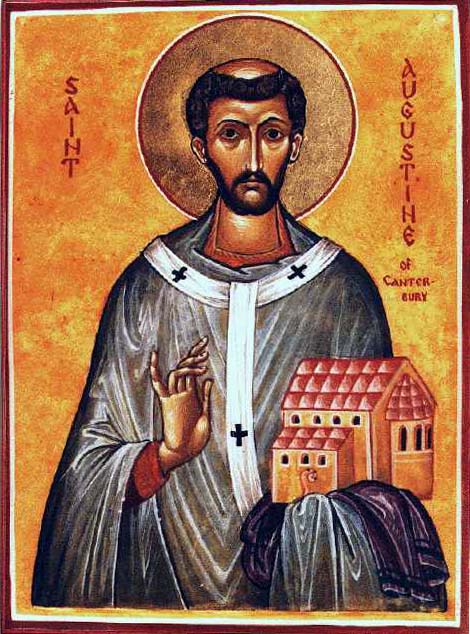ABOUT ST. AUGUSTINE OF CANTERBURY

In the year 596, on the Isle of Thanet, just off the coast of Kent in southern England, a strange procession made its way from the small church on the island to where the King of Kent sat under an oak tree, afraid that these strange messengers might be magicians to do him harm. The priest who approached him – dressed in the ceremonial vestments of a priest, with acolytes carrying a silver cross and a deacon holding high an icon of Christ the Lord – was St. Augustine of Canterbury, a monk of St. Andrews on the Coelian Hill in Rome.
Accompanied by thirty monks, Augustine had come at the express command of Pope Gregory the Great to evangelize the Anglo-Saxon kingdoms of Britain and to restore the ancient Roman discipline to the island, based on the provincial structure of Roman Britain.
He had been ordered to set up his see in London, but the headquarters of the King of Kent was Canterbury, and so Canterbury became the primatial see of England and remains so to this day. Within the year, Augustine had converted the King of Kent, whose wife was a Christian princess from Gaul, and very painfully and slowly began the work of restoring Christianity to Britain. There were bishops present already, successors to the Celtic bishops of Roman Britain, but the Anglo-Saxons were their hated enemies who had conquered their country and driven them from their homes and cities. Augustine's task was beset with discouragement and almost insurmountable obstacles and he lasted less than ten years in his difficult mission.
Soon after his arrival, Augustine went to Arles in France, the prefectural headquarters to be consecrated bishop and came back and consecrated bishops for London and Rochester, capitals of two kingdoms closely allied with Kent. He died in 605 and was buried in the monastery of Saints Peter and Paul in Canterbury.